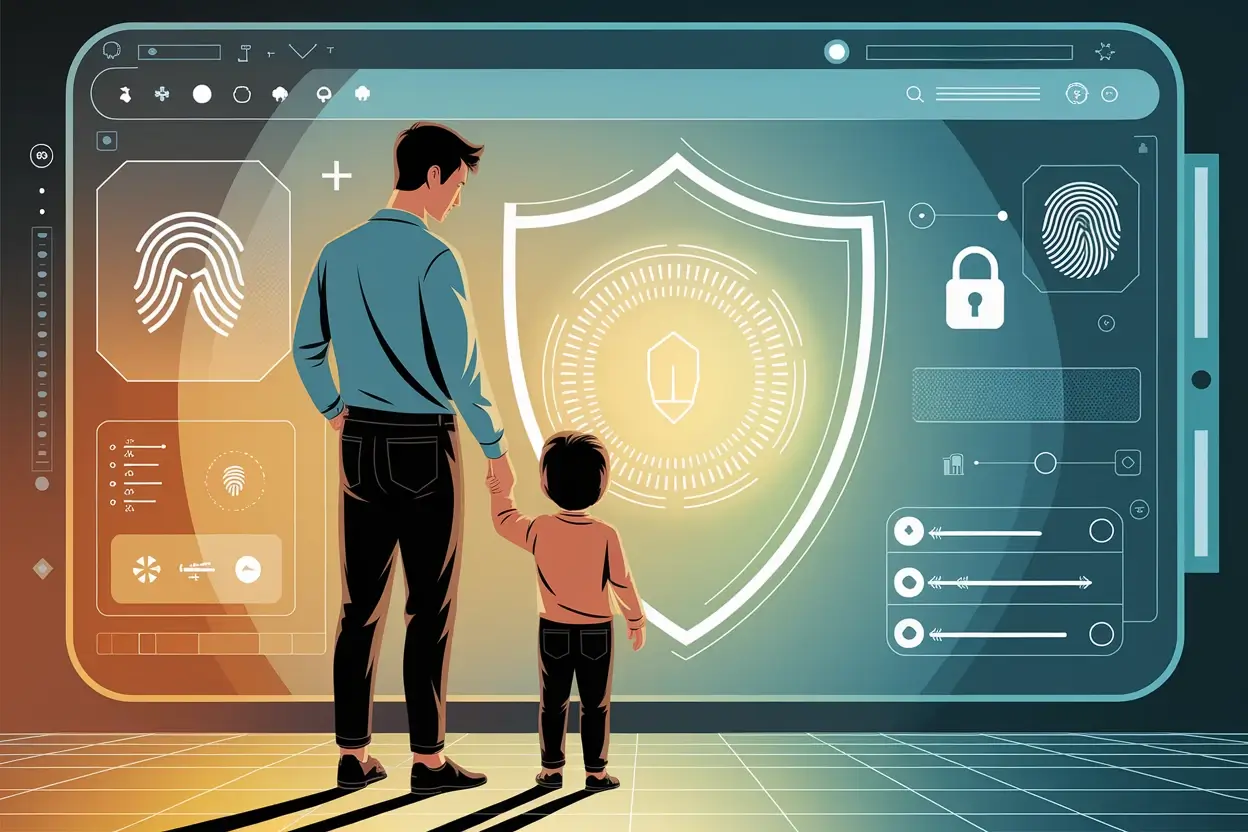
The Parent's Guide to Face Recognition: Protecting Your Children's Digital Identity
In today's digital world, protecting your children's online presence is more important than ever. Learn how face recognition technology can help you monitor and safeguard your child's digital identity.
Every day, millions of photos featuring children are uploaded to the internet through social media, school websites, sports teams, and family sharing. While sharing precious moments is natural, it creates a permanent digital footprint for your child before they're old enough to consent. Research shows that 92% of children have an online presence by age 2, yet only 24% of parents actively monitor where their child's photos appear online. FaceCheck empowers parents to take control and protect their children's digital identity proactively.
Hidden Risks of Children's Photos Online
Children's photos can appear on unexpected websites without parental knowledge.School yearbooks and directories are often digitized and searchable online.Sports team websites frequently post action shots and team photos.Third-party sharing by relatives and friends can spread images across multiple platforms. Some photos may be scraped by data brokers and sold to marketing companies. In rare but serious cases, images may be misused by predators or for identity theft purposes.

How Parents Can Use FaceCheck to Protect Their Children
Start with a monthly digital audit by uploading recent photos of your child to FaceCheck. Our AI will scan across millions of websites to find where these images appear. Set up regular monitoring especially after school events, sports seasons, or family gatherings. Use FaceCheck to verify the identity of people your teenager meets online before in-person meetings. Check for unauthorized commercial use of your child's image in advertisements or stock photos.
Parental Peace of Mind
Ages 3-7: Explain that photos can "travel" to different places on the internet.Ages 8-12: Introduce the concept of digital footprints and why we need to be careful.Ages 13-16: Discuss privacy settings, consent, and long-term consequences of sharing.Ages 17+: Teach them to use tools like FaceCheck to monitor their own digital presence.
Practical Steps for Digital Protection
Review privacy settings on all platforms where you share photos. Ask family and friends to get permission before posting photos of your children. Opt out of school photo directories when possible.
Use FaceCheck monthly to scan for your child's photos online. Set up Google Alerts for your child's name. Check social media platforms where your teen might have accounts.
Contact websites directly to request photo removal. File DMCA takedown notices for unauthorized use. Consider legal action for commercial misuse of your child's image.
Your Legal Rights as a Parent
COPPA (Children's Online Privacy Protection Act) gives parents rights over their child's data collection.GDPR and state privacy laws provide additional protections for children's biometric data. You have the right to request deletion of your child's images from most websites.Educational records containing your child's photo require your consent under FERPA. Commercial use of your child's image without permission may violate publicity rights laws.
Know Your Rights
Real Parent Success Stories
"I used FaceCheck on my 8-year-old's school photo and found it on three different websites I'd never heard of. One was a data broker selling 'family information.' I was able to get the photos removed and now I check monthly."
"My teenager was talking to someone online who claimed to be their age. I used FaceCheck on the person's photo and discovered it was stolen from a college student's Instagram. We avoided a dangerous situation."
Digital Parenting Best Practices
Create a family digital privacy policy that everyone understands and follows. Have regular conversations about online safety appropriate for each child's age.Lead by example with your own social media privacy practices. Use parental control tools and monitoring software for younger children.Build trust with teenagers by being transparent about monitoring and explaining why it's necessary. Stay informed about new platforms and apps your children might use.
Preparing for Your Child's Digital Future
As your child grows, gradually transfer digital privacy responsibilities to them.Teach them to use FaceCheck themselves before they turn 18. Help them understand how their digital footprint could affect college admissions and job prospects. Discuss the permanence of digital content and the importance of thinking before sharing.Stay updated on emerging technologies like deepfakes and new privacy threats.
Start Protecting Your Child's Digital Identity Today
Don't wait until it's too late. Use FaceCheck to see where your child's photos appear online and take control of their digital future.
Try FaceCheck Free